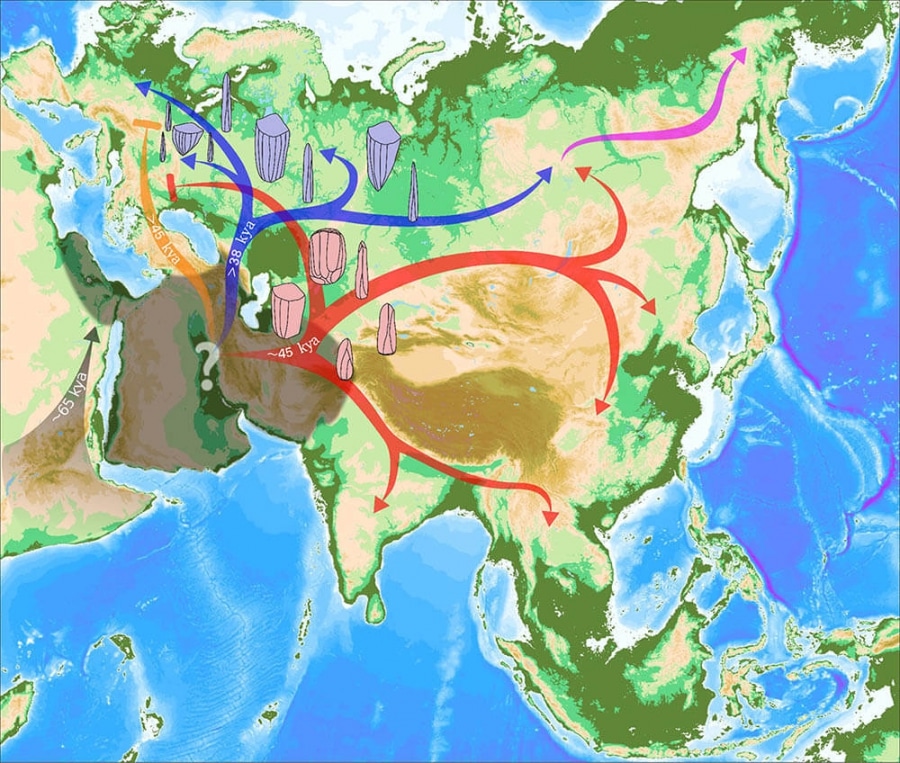The discovery of 45,000-year-old human remains in Bulgaria’s Bacho Kiro Cave has forced scientists to reconsider the existing theory that the first representatives of Homo Sapiens came to Eurasia from Africa. The remains of the Bacho Kiro are the oldest hominin bones from the Upper Paleolithic ever found in Europe. Researchers at the universities of Bologna and Padua studied them for seven years before publishing a new theory about the settlement of modern humans on the planet. The findings are published in the journal Genome Biology and Evolution. Analysis of the bone fragments found found that the people to whom they belonged were genetically more closely related to the people of East Asia from that period than to the inhabitants of the African continent. This means that the migration routes of the first modern people in Eurasia were more complex than previously thought. Earlier, experts from the Max Planck Institute for Evolutionary Anthropology found that hominins, whose remains were found in Bulgaria, not only arrived earlier than Africa in Eurasia from the officially accepted date, but also managed to pass on their genes. of the inhabitants of East Asia, as well as to cross with Neanderthals.
This could only have happened if the migration of people from Africa was constant, but then for some reason it stopped abruptly. “About 45,000 years ago, a new wave of expansion came from Africa and conquered a wide area from Europe to East Asia and Oceania. These people left us methods for creating instruments known from the early Upper Paleolithic, “said molecular anthropologist Leonardo Valini of the University of Padua. According to scientists, the colonization of Eurasia of our species occurred as a result of several waves of active expansion, which ended in partial extinction. The spread of all waves, according to scientists, was carried out by one center – the ancestor of all Eurasian people. It was formed after Homo Sapiens first left Africa about 60-70 thousand years ago. According to anthropologists, the exact location of this center is still unknown, but they believe that it should be sought in the Middle East and the Arabian Peninsula.
The first expansion took place more than 45,000 years ago and ended in failure. The remains of the only representative (more precisely the only representative) of this migration wave were found in the Czech town of Zlati Kun. Genetic analysis of the skulls of women’s remains has shown no links with modern Europeans or modern Asians. That is, the woman belonged to the European population of Homo Sapiens, which disappeared without a trace. According to researchers, the fate of the second wave turned out to be different: Apparently, those who went to Asia prospered. The genes of these people can still be traced to our contemporaries. However, something has happened in Europe that has stopped migration to these territories. There is almost nothing left of the European part of this migration wave except individual finds – the remains of Bacho Kiro in Bulgaria, of Peshtera-ku-Oase in Romania and some others. Scientists note that the last Neanderthals disappeared at about the same time. “It is interesting to note that the last Neanderthals also disappeared in Europe at about the same time,” said Julia Marciani, an archaeologist at the University of Bologna. “Finally, the last expansion took place about 38,000 years ago. These settlers have re-colonized Europe from the same center, the location of which remains to be determined, “added Luca Pagani, co-author of the study from the University of Padua. Anthropologists believe that in Europe there were only rare, accidental interactions between the new settlers and the surviving descendants of the second wave of colonizers. Extensive and mass mixing between representatives of the two waves occurred only in Siberia and led to the creation of a special genotype known as the Ancient North Eurasian. These settlers later became the ancestors of the Native Americans. Scientists have linked the third wave of colonization to cultural finds from the Upper (Late) Paleolithic. The researchers note that they differ significantly from the Early Upper Paleolithic finds from the second wave. “It is remarkable that from a cultural point of view, the new stone tools from the Upper Paleolithic are often presented as an independent development and not as a development of already existing technology in Europe. It’s nice to see that a complex scenario combines genetic and cultural data, “said Telmo Pievani of the University of Padua. Scientists plan to continue their work to determine where the center was located – a single ancestor of the Eurasian. Researchers also want to know what caused each of the waves of displacement.
Photo: Scheme of the settlement of Eurasia. Orange – the first wave (more than 45 thousand years ago), red – the second wave (about 45 thousand years ago), blue – the third wave (about 38 thousand years ago). Leonardo Vallini, Giulia Marciani












